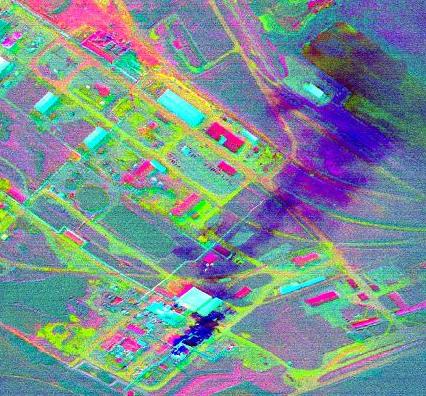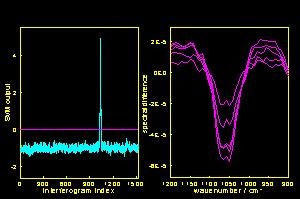Breadcrumb
- Home
- Research Projects
Research Projects
Research Projects
We are developing environmental monitoring techniques based on the synergistic use of a single-point passive Fourier transform infrared (FT-IR) spectrometer coupled to an infrared line scanner imaging system. These passive remote sensors are configured to collect naturally occurring infrared radiance from the outdoor environment. The spectral features of airborne compounds are superimposed on this ambient infrared background emission as either absorption or emission bands. By use of appropriate data processing methods, these analyte signatures can be extracted and used to identify target chemicals, as well as estimate their concentrations. The combined use of an imaging line scanner system with a single-point spectrometer provides a unique capability for identifying chemical plumes and then interrogating them in detail. In the figure below, imaging data collected from an overflight of an industrial facility are displayed. A plume of methanol can be observed in purple.

In the next next figure, an ethanol release is detected from the air with a downward-looking FT-IR spectrometer. The ethanol detection is performed by use of signal processing and pattern recognition methods applied directly to the interferogram data collected by the spectrometer. The left panel shows the output from the ethanol classifier as the aircraft flies. Ethanol detections correspond to scans where the classification trace goes above the magenta line. Difference spectra corresponding to the detections are shown in the right panel. The ethanol C-O absorption band at 1066 cm-1is clearly seen.

Example applications for this technology include regulatory monitoring of industrial stack emissions, chemical leak detection, pollutant monitoring at hazardous waste sites, and emergency response scenarios such as chemical plant accidents or terrorist incidents. In conjunction with our collaborators at the United States Environmental Protection Agency, our work is focusing on new design concepts for these sensors, as well as the development of signal processing, pattern recognition, and image analysis methodology for use in data interpretation.